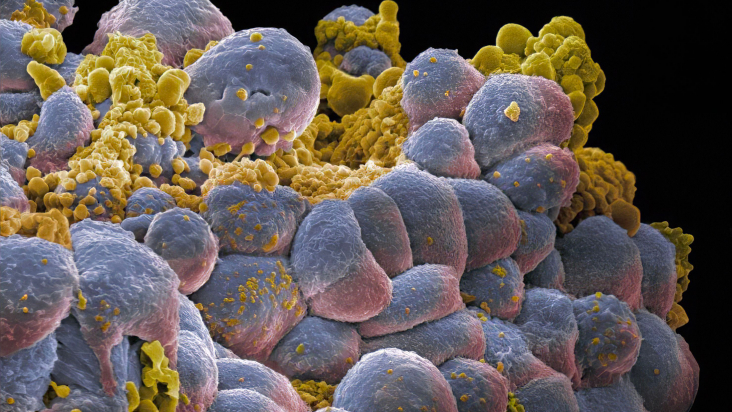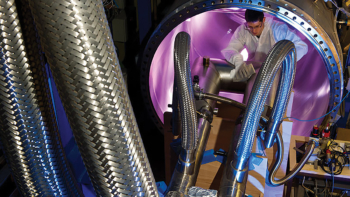 Read article 'Biology at the Bragg peak'
Read article 'Biology at the Bragg peak'
 Read article 'Biology at the Bragg peak'
Read article 'Biology at the Bragg peak'
PTCOG president Marco Durante describes an exciting future for the technology and shares his vision for closer international cooperation between medicine, academia and industry.
When Francesca Luoni logs on each morning at NASA’s Langley Research Center in Virginia, she’s thinking about something few of us ever consider: how to keep astronauts safe fro...
The CMS collaboration is employing neural networks to conduct model-independent searches for short-lived particles that could escape conventional analyses.
 Read about 'In focus: detector technology'
Read about 'In focus: detector technology'
A retrospective of 60 years’ coverage of detector technology in CERN Courier
 Read article 'Standardising sustainability: step one'
Read article 'Standardising sustainability: step one'
The Laboratory Directors Group has published guidance on evaluating the carbon impact of accelerator projects.
 Read article 'ICFA meets in Madison'
Read article 'ICFA meets in Madison'
The 99th meeting of the International Committee for Future Accelerators took place on 24 August 2025, in Madison.
 Read article 'CEPC matures, but approval is on hold'
Read article 'CEPC matures, but approval is on hold'
The Circular Electron–Positron Collider (CEPC), a 100-km electron–positron “Higgs factory” proposed in China, has reached the technical-design stage but will not be include...
 Read article 'Double plasma progress at DESY'
Read article 'Double plasma progress at DESY'
New developments tackle two of the biggest challenges in plasma-wave acceleration: beam quality and bunch rate.
 Read article 'A new phase for the FCC'
Read article 'A new phase for the FCC'
FCC Week 2025 took place in Vienna from 19 to 23 May.
 Read article 'Accelerators on autopilot'
Read article 'Accelerators on autopilot'
Verena Kain highlights four ways machine learning is making the LHC more efficient.
 Read article 'Powering into the future'
Read article 'Powering into the future'
Nuria Catalan Lasheras and Igor Syratchev explain why klystrons are strategically important to the future of the field – and how CERN plans to boost their efficiency above 90%.
 Read article 'FCC feasibility study complete'
Read article 'FCC feasibility study complete'
The final report of a study investigating the technical and financial feasibility of a Future Circular Collider at CERN was released on 31 March.
 Read article 'Gaseous detectors school at CERN'
Read article 'Gaseous detectors school at CERN'
DRD1 is a new worldwide collaborative framework of more than 170 institutes focused on R&D for gaseous detectors.
 Read article 'Educational accelerator open to the public'
Read article 'Educational accelerator open to the public'
What better way to communicate accelerator physics to the public than using a functioning particle accelerator?
 Read article 'Chamonix looks to CERN’s future'
Read article 'Chamonix looks to CERN’s future'
CERN’s accelerator and experimental communities converged on Chamonix to chart a course for the future.
 Read article 'The triggering of tomorrow'
Read article 'The triggering of tomorrow'
The third TDHEP workshop explored how triggers can cope with high data rates.
 Read about 'In focus: vacuum technology'
Read about 'In focus: vacuum technology'
Innovation in vacuum science, technology and engineering at CERN and beyond